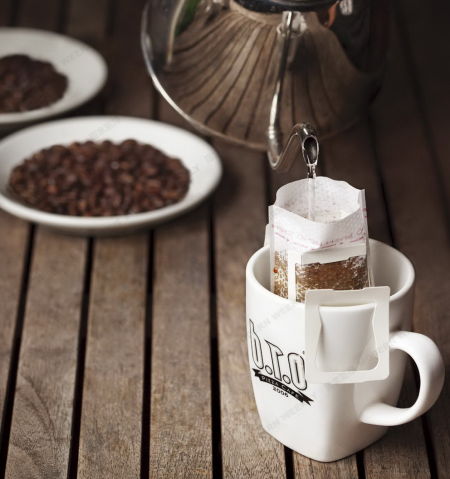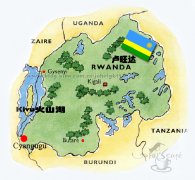Infinite worlds in coffee beans

In the small space of a coffee bean, there is an infinite world.
Coffee beans "would rather have balls".
Thousands of years ago, when Chen Sheng and Wu Guang rose up, he shouted: how dare a prince? Of course, it sounds very pleasant to us, who have long been used to the idea of equality for all, but if this sentence is put on the coffee beans, it is estimated that the beans will jump out and object: we all have to talk about our origins! In our view, they are all small black charcoal-like coffee beans, but according to Liang Chaoxiong, a veteran coffee expert, there are basically three species, arabica, robusta and liberica, although there are as many as 40 species of coffee plants. Among them, Lobusta is the most highway. it belongs to lowland coffee, with strong disease resistance and the highest yield, accounting for 60% to 70% of the output of coffee beans on the market. It can be found in Southeast Asia and West Africa. Its caffeine content is also high, instant coffee, canned coffee is the favorite.
Arabica is a typical "alpine flower", belonging to highland coffee, and most of the fine coffee comes from this category. Coffee such as Blue Mountain, which is an idol in the hearts of coffee fans, is also an Arabica species. It has appeared for the longest time in human history, and it is said that the coffee that was first introduced into the western world from the Arab world is Arabica coffee. It is the only coffee that all native species can drink directly, but it has a fatal point is its low disease resistance, how low is it? Sri Lanka was once a famous coffee-growing country, but all Arabica coffee growers in the country went home because of a coffee leaf rust, and they had no choice but to switch to black tea. It can be found in South America, Central America, Africa and parts of Asia.
When it comes to the least minority, Liberia is not as delicious as Arabica, and there is no large amount of money injected into planting, usually only for communication between experts or for research.
Highland coffee is superior to others.
Among the three major coffee beans, players are after Arabica beans. This is because highland coffee is better than lowland coffee. Therefore, when commenting on the quality of coffee, the height of the origin is often included in the evaluation criteria. The higher the altitude and the lower the relative temperature, the coffee fruit can ripen slowly, so the fully ripe beans have good expansibility and are easy to bake. In the coffee producing countries in Central and South America, the quality of coffee beans is basically evaluated only by the altitude of the place of origin. As for boutique coffee, it is all highland coffee. Of course, if you play more professionally and profoundly, you will probably see whether the coffee has organic certification or not. Players generally agree that: American USBA certification, rainforest certification, fair trade certification.
Give coffee beans a second life.
Baking is equivalent to giving coffee beans the finishing touch. The flavor of the coffee bean itself is latent, and only moderate baking can attract its amorous feelings, just as dry wood needs fire. In the eyes of experts, 80% of the factors that determine the taste of coffee come from raw beans and 20% depend on roasting. Baking is divided into deep, moderate and shallow three kinds of baking, these three baking methods themselves are not high or low, or the coffee beans themselves are suitable for what kind of baking method, the key lies in the baking method. If the technique is wrong, even the best beans will be scrapped. The most difficult thing about baking coffee is the best time to stop, which depends on how the roaster captures the characteristics of coffee beans. This should be judged by experience and pay attention to the changes in temperature, color, sound, aroma, shape and luster of beans.
All coffee tastes bitter and sour. Generally speaking, the lighter the degree of roasting, the stronger the sour taste of coffee. The deeper the baking degree, the stronger the bitterness. Deep roasting is suitable for coffee with strong sour taste. Light roasting is suitable for bitter coffee, which can release the sour taste, ease the excessive bitterness and balance the taste. However, coffee has an expiration date, no matter how superb the roasting method is, drink it up within two weeks after roasting, otherwise the flavor will be greatly reduced.
The extract of the decisive game
After the correct picking, production and baking, we came to the last two gates of import, grinding and extraction. The two processes complement each other. The thickness of the grinding determines the way in which coffee is extracted. Generally speaking, fine powder is the easiest to extract the essence, so it takes the shortest time, which is extracted immediately after being washed quickly with water of 90 degrees Celsius, using an Italian machine and a mocha kettle. For moderate grinding, it is usually drunk by the family. Preheat coffee cups and coffee pots to make the coffee more fragrant. The water temperature is generally 85 to 90 degrees Celsius, mainly hand flushing pots, dripping pots and siphon pots. As for the coarse powder, it should be on the French kettle, which takes the longest extraction time, and the water temperature is also between 85 and 90 degrees Celsius.
The standard of good coffee
Despite the fact that there are a lot of professional terms used to judge coffee, which are comparable to red wine, you can ignore them all, and your tongue is the first judgment. Mr. Liang said that if the coffee is really good, it is actually very simple: it tastes comfortable, clean, odorless, pure aroma, and the most important thing is that the coffee beans should be fresh. If it had been put on for a year and a half, Xi Shi would have become a bell without beauty.
Important Notice :
前街咖啡 FrontStreet Coffee has moved to new addredd:
FrontStreet Coffee Address: 315,Donghua East Road,GuangZhou
Tel:020 38364473
- Prev

Characteristics of Coffee from Eight Major Producing Areas in Guatemala
Photograph/Compilation: Huang Wei Copyright Guatemala is a famous high-quality Arabica coffee producing country in Central America. The coffee from five volcanic producing areas and three non-volcanic producing areas is very unique and enjoys a high reputation in the international market. Eduardo Ambrocio of Guatemala Coffee introduced Guatemala coffee to the audience at SCAA Houston in April 2010. Thank you very much.
- Next

Boutique Rwandan coffee
Rwandan coffee is absolutely high quality in the form of washed Arabica beans. As far as Africa is concerned, its coffee industry stands out because the country rises and falls by producing the best possible beans. The taste of Rwandan coffee is described as a grassy aroma with tropical climate characteristics. The country's fertile soil and climate help plants grow, and coffee trees seem to be driven
Related
- Guji coffee producing area of Guji, Ethiopia: Humbela, Shakiso, Wulaga
- What is the most expensive variety of Qiloso in BOP multi-variety group?
- How to store the coffee beans bought home?
- Why are Yemeni coffee beans so rare now?
- Ethiopian Sidamo all Red Fruit Sun Sun Santa Vini Coffee beans
- SOE is mostly sour? What does it mean? Is it a single bean? what's the difference between it and Italian blending?
- Is Italian coffee beans suitable for making hand-brewed coffee?
- How to choose coffee beans when making cold coffee? What kind of coffee beans are suitable for making cold coffee?
- Just entered the pit to make coffee, what kind of coffee beans should be chosen?
- Can only Japan buy real Blue Mountain Coffee? What are authentic Jamaican Blue Mountain coffee beans?

